Creating Your Own Personal Desert
 25 September 2018
25 September 2018 
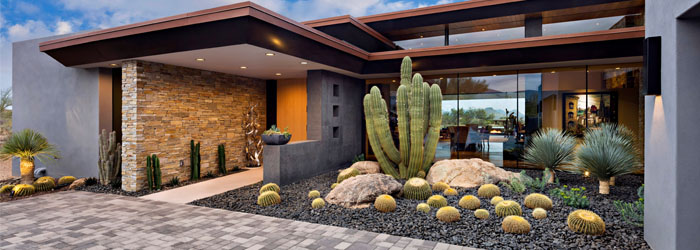
Custom Desert Dreamscape
If you really love the Arizona desert, you often want to capture the look of the desert in your own yard. But there might be concerns that have you puzzled: How do you water a yard full of cacti; how do you bring color into the garden if you're creating a water friendly desertscape; how do you care for some of those larger native plants without injuring the plant; and how do you fill up a yard with plants that may take years to reach the right size?
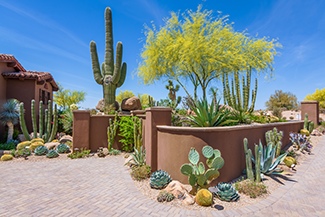
Who better to ask about native plants and their care than your local landscapers who have all the answers you're looking for. We've learned a lot talking to local landscapers about the landscaping trends and projects completed in Cave Creek, North Scottsdale, and Carefree.
Some local companies have saved many one-of-a-kind specimen cacti and plants of mature sizes for replanting in clients' yards including many large cactuses and plants from all over the valley. One company stated that this has helped them assemble an inventory of larger plants. Often the endangered plants removed have grown too large for a homeowner's lot or need to be cut down for other reasons. Sometimes homeowners want to remove them to remodel their homes. In lieu of losing them, they get dug up and rescued. Rarely are any plants lost, even in digging them out with backhoes and using cranes to pick them up and move them over a house. Some specimen cactuses have weighed 2,000 to 3,000 pounds.
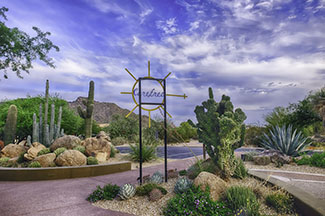
What follows is some advice on desert landscaping:
1 | Water:
Just because something is a cactus doesn't mean it doesn't like water. Cactuses even absorb water through their pores after a shower. "If you think they do better without water, just check out those beat-up cactuses out in the desert that aren't getting enough rain," Chad Norris says. "Everything in the desert landscape needs water, just not as much as perennials need."
2 | Irrigation:
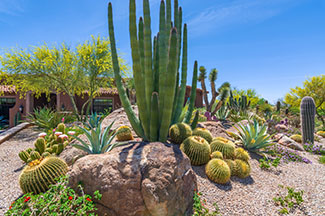
When installing irrigation for a sustainable desert landscape, it's best to have separate lines or stations to fine-tune watering of different plants. This might mean: one for cactuses, one for citrus or grass, one for perennials, one for full shade areas, one for full sun.
3 | Soil:
Before planting, find out what kind of soil you have because you may need to bring in better soil depending on your desert location. In Black Mountain, Desert Mountain and DC Ranch, for example, soil can be very, very rocky; while soil in Paradise Valley can be very rich in nutrients. Don't use mulch or potting soil with cactuses and succulents. You want soil that is as close as possible to their native soil.

4 | Shade:
When transplanting desert plants, you may need to shelter them with shade cloth in their first season in their new location. A cactus that was facing north previously, for example, may need some protection from heat and sun.
5 | Fertilizer:
Even cactuses may need fertilizer to keep them green and happy. "If you pluck a cactus out of the desert and it's scarred and yellow, it may have nutrient deficiencies," Norris said.
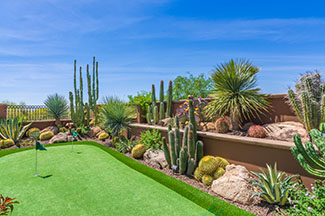
6 | Color:
What homeowners ask Chad Norris most often: How can you get color in a desert landscape? It's not going to be with annuals and lots of blooming flowers. Chad Norris contends the same visual effect will occur when you look at the landscape and see the textures and natural color in blue agaves, light and dark green cactus and succulents, and the yellow golden barrels. As a bonus "you're going to enjoy those colors and amazing textures in the middle of winter and all year long," he says.
###
Photo Credits:
- Rosie on the House
RELATED CONTENT:
- Blog: All About Saguaros
- Blog: Plants: Out Of Control
- KTAR Blog: Five Low-Water Trees To Provide Shade For Your Arizona Home
- DIY FAQ: Tips For Setting Up Your Drip Irrigation System
- Podcast: Plants That Love Arizona Too Much
Print this page
recent post
- Duck, Duck, Duct! How Often Should Ductwork Be Cleaned?
- Vinyl vs. Fiberglass Windows: Which Is The Better Choice Of Replacement Window?
- We May Be The Grand Canyon State, But The Rocky Mountains Are Important For Arizona
- Welcome to Arizona! Things A Newbie to Arizona Should Know
- The Pros & Cons of Buying A Flipped House
- Getting In On The Ground Floor
- Why It’s More Critical Than Ever To Get Your AC Serviced Before Summer
- The Reality of Remodeling
- What To Look For When Comparing Your Roofing Quotes
- What To Expect When Buying New Windows & Doors
